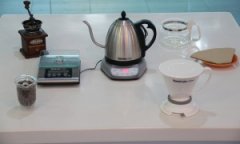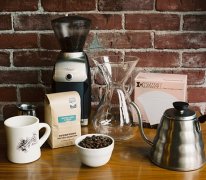A brief introduction to the main producing areas of coffee beans in Ethiopia
Hara (Harar) / solarization or drying (Sundried/Dry-Processed)
Hara is located in the Eastern Highlands of Ethiopia (Harerge Province) and grows between 5000 and 7000 feet above sea level. A century ago, it was still wild on the slopes. Most of the raw beans are medium size and long at both ends, with yellow or golden green color, strong chocolate smell when baking, wild taste with moderate acidity and rich texture. It is a very typical mocha flavor. Good Hara has jasmine scent. And similar to the aftertaste of fermented wine, to some extent, the Mattari close to the Bani Matar area of Yemen is better.
Today, Hara still treats raw beans in the traditional sun, which is usually exported to the neighboring town of Dire Dawa, with an annual output of about 185000bags/60Kg, of which long beans (Longberry, evolved from the early Elaraby tree species,) and mostly G5 (Grade 5) or G4 are exported. Unfortunately, good haras are often smuggled to Yemen and sold at higher prices for mocha beans.
When drinking, in addition to a single product, its rich taste and wine acid can also be used as the base of espresso.
Djimmah / Sundried
Gima, which accounts for about 50 per cent of Ethiopia's annual output (1000000bags/60kg), grows between 4400 and 6000 feet above sea level in the southwestern highlands of the country (the border between Kaffa and Illubabor provinces) and is usually exported to G5/G4.
However, in recent years, about 10% or 20% of Gima has been used to make up for the lack of taste of coffee, but its quality has gradually declined to its own level, but there are bipolar comments on coffee buyers (my friend only uses Gima as the base of espresso in his store, and its strong flavor surprises me). The coffee is like a hara, which follows the ancient method of sunbathing. It is also a little sour but slightly inferior to Hara, with medium texture and rugged earthy taste.
Ghimbi & # 39; Lekempti / Solar, naturally dried or washed (Sundried or Nature Dry-Processed and Washed)
Growing in western Ethiopia, 4900-5900 feet (Wollega province) plateau, north of Jima, mostly wild, annual output is about 500000bags/60kg, export is mostly G5/G4, bean body is larger and longer than Longberry, a little brown in green, taste similar to less jasmine tea, more bitter, lack of rising Hara, slightly sour, slightly fruity and wine aroma, but slightly inferior to Hara, but with good texture and viscosity. So the beans in Jinbi District are jokingly called "poor man'". S Harar ".
The taste is complex but balanced, with better throat rhyme in deep culture and longer back sweet, which is one of the materials that many bakers like to use as comprehensive beans, of course, it can also be used as a good single product, suitable for drinking after meals.
Lim (Limu) / washing (Washed)
Growing in the western highlands of southern Ethiopia (the border between Shewa and Sidmo), east of Jima, north of Sidamo, most Europeans and Americans prefer 3600-6200 feet above sea level, most of them are washed with water, their annual output is about 110000bags/60kg, most of them are round (15/16scr), the color is green and bluish, the export is mostly G2, the taste is similar to Yegashev, but the viscosity is thin, but the fragrance of flowers and fruit are obvious. The sour taste is also softer than Yegashev, the more irritating acidity, the aftertaste is similar to the wine, and has a good and balanced quality. it is a noteworthy Ethiopian boutique coffee after Yegashev, but almost all limes are vertically integrated and exported by Ethiopian coffee organizations, so it is almost rare to see them in China.
It is heard that this kind of baking is more suitable for air flow medium baking, not suitable for deep baking, and the better flavor after baking is two to three days. In fact, the good Lim is on a par with Yegashev (this is actually a subjective consciousness of different opinions).
Sidamo (Sidamo) / solarization, natural drying or washing (Sundried or Nature Dry-Processed and Washed)
Growing in the southernmost Ethiopian plateau at an altitude of 4600-7200 feet (Sidamo province), southeast of Jima, just south of the capital, usually sweet, but also loved by most people, its annual output is about 225000bags/60kg, bean body is smaller than Longberry, green with ash, in the Sidamo sun drying field, coffee is placed in hemp net wooden racks, workers take turns in the sun exposure, manual stirring coffee Sun Sidamo is usually marked with G4 exits, while water-washed Sidamo has more G2 exits because of its better sun treatment.
The taste of the sun is close to the smell of flowers, but it is about a little earthy. Water washing has a nutty fruit aroma with a slight cocoa aroma, but what the two pieces have in common is smooth taste and viscosity, comfortable and pleasant acidity and fragrance. Medium roasting is suitable for individual products, while deep roasting is suitable for blending coffee and good Espresso base.
Yegashev (Yirga-Cheffe) / washing (Washed)
The origin of the name is made up of two parts, Yirga is a town name of Sidamo, which means stable, and Cheffee means municipality.
It grows in the southern Ethiopian plateau at an altitude of 5700-7800 feet above sea level. It is located in the northwest of Sidamo province and around Lake Abaya. It usually tastes sweet and is liked by most people. Its annual output is about 225000bags/60kg. The bean body is smaller than Longberry, and it is greenish and gray in color. Most of it is washed. In the washing plant, the coffee fruit is fermented in the storage tank full of water after harvest, and the workers use a simple wooden rake to stir it to facilitate the smooth cleaning. The washing plant always has a pungent acid fermentation smell and the sound of the fruits in the sink colliding with each other. After the fruit is sticky and soft, it is directly shelled and cleaned, leaving only the fruit covered with sheepskin. After the final washing, the fruit is dried directly outside the washing plant.
A complex with a taste similar to lemon and citrus, with excellent viscosity and complex flavor (I think it is sometimes suspected of being overemphasized and exaggerated because of its loud name, even though I like its flavor). Most of them are exported to G2, suitable for medium baking as a single product.
In addition, it should be mentioned that most of them are produced by state-owned institutions, but the quantity is small and is not well known to the world. Teppi and Bebeka;Teppi, which are lightly described here, grow between 3600 and 6200 feet above sea level, with an annual yield of about 50000 bags and 60kg. Bebeka grows between 3000 and 3900 feet above sea level, with an annual output of about 30000bags/60kg. Bebeka is planted in the lower part of southwestern Ethiopia and is almost used as a blend.
Important Notice :
前街咖啡 FrontStreet Coffee has moved to new addredd:
FrontStreet Coffee Address: 315,Donghua East Road,GuangZhou
Tel:020 38364473
- Prev

SCAE Standard hand Coffee course Coffee basic knowledge
Hand-brewed coffee is the most popular way of brewing coffee in the third wave, which is the most popular way of brewing coffee in today's boutique coffee era. both its production method and coffee flavor are worthy of in-depth study and discussion. We should thank the German wife Melitta for this popular way of brewing coffee in the world. She invented the coffee bubble method more than 100 years ago, which changed the way the world drinks coffee.
- Next

Hand brewing, Ailo pressure, American style, ice drop coffee making
Hand drip filter coffee: the production process of hand drop filter coffee is slow, the basic principle is to pour hot water on the coffee powder in the filter paper, and let the coffee slowly soak and filter. Hand-brewed coffee has a bright taste, a stronger aroma, and can highlight the sweetness of coffee. If the skill is skillful enough, the quality of hand-brewed coffee is absolutely one of the best. Philharmonic pressure: Philharmonic pressure is really wrong.
Related
- Detailed explanation of Jadeite planting Land in Panamanian Jadeite Manor introduction to the grading system of Jadeite competitive bidding, Red bid, Green bid and Rose Summer
- Story of Coffee planting in Brenka region of Costa Rica Stonehenge Manor anaerobic heavy honey treatment of flavor mouth
- What's on the barrel of Blue Mountain Coffee beans?
- Can American coffee also pull flowers? How to use hot American style to pull out a good-looking pattern?
- Can you make a cold extract with coffee beans? What is the right proportion for cold-extracted coffee formula?
- Indonesian PWN Gold Mandrine Coffee Origin Features Flavor How to Chong? Mandolin coffee is American.
- A brief introduction to the flavor characteristics of Brazilian yellow bourbon coffee beans
- What is the effect of different water quality on the flavor of cold-extracted coffee? What kind of water is best for brewing coffee?
- Why do you think of Rose Summer whenever you mention Panamanian coffee?
- Introduction to the characteristics of authentic blue mountain coffee bean producing areas? What is the CIB Coffee Authority in Jamaica?

